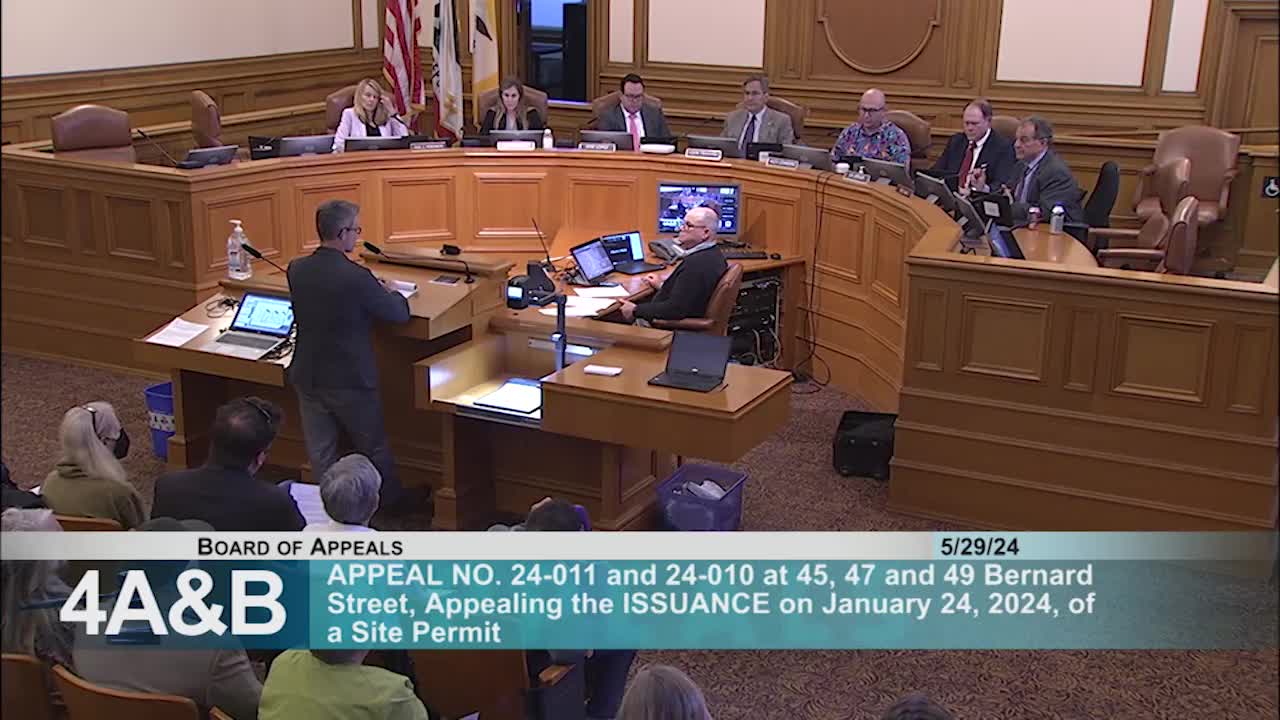Planning Commission confirms building compliance but addresses ADU concerns
May 29, 2024 | San Francisco City, San Francisco County, California

This article was created by AI summarizing key points discussed. AI makes mistakes, so for full details and context, please refer to the video of the full meeting. Please report any errors so we can fix them. Report an error »

In the heart of San Francisco's City Hall, a recent government meeting illuminated the complexities surrounding residential design and the potential for accessory dwelling units (ADUs) in the city. As city officials gathered, the discussion centered on a proposed building project that had already received the green light from the planning commission, primarily due to its compliance with residential design guidelines.
The meeting revealed that the massing of the building—its overall shape and size—was not a point of contention. Instead, the focus shifted to the basement level, where the possibility of creating an ADU was explored. However, the existing ceiling height of just six feet posed significant challenges. Officials noted that substantial renovations would be necessary to make the space habitable, raising questions about the feasibility of such an investment.
As the conversation unfolded, it became clear that while the plans included provisions for lowering the basement floor to meet the required ceiling height for an ADU, there was no obligation for the developers to pursue this option. Recent legislative changes had also eased the process for removing unauthorized dwelling units (UDUs), allowing property owners to eliminate these spaces without extensive legal hurdles if they did not meet housing code standards.
The implications of these discussions are significant for San Francisco's housing landscape. With the city grappling with a housing crisis, the potential for converting underutilized spaces into livable units is a topic of keen interest. Yet, the financial burden of renovations and the evolving regulatory environment complicate the path forward.
As the meeting concluded, it was evident that while the project at hand may not immediately lead to new ADUs, the ongoing dialogue about housing solutions in San Francisco remains vibrant and essential. The city continues to navigate the delicate balance between development, compliance, and the pressing need for more affordable housing options.
The meeting revealed that the massing of the building—its overall shape and size—was not a point of contention. Instead, the focus shifted to the basement level, where the possibility of creating an ADU was explored. However, the existing ceiling height of just six feet posed significant challenges. Officials noted that substantial renovations would be necessary to make the space habitable, raising questions about the feasibility of such an investment.
As the conversation unfolded, it became clear that while the plans included provisions for lowering the basement floor to meet the required ceiling height for an ADU, there was no obligation for the developers to pursue this option. Recent legislative changes had also eased the process for removing unauthorized dwelling units (UDUs), allowing property owners to eliminate these spaces without extensive legal hurdles if they did not meet housing code standards.
The implications of these discussions are significant for San Francisco's housing landscape. With the city grappling with a housing crisis, the potential for converting underutilized spaces into livable units is a topic of keen interest. Yet, the financial burden of renovations and the evolving regulatory environment complicate the path forward.
As the meeting concluded, it was evident that while the project at hand may not immediately lead to new ADUs, the ongoing dialogue about housing solutions in San Francisco remains vibrant and essential. The city continues to navigate the delicate balance between development, compliance, and the pressing need for more affordable housing options.
View full meeting
This article is based on a recent meeting—watch the full video and explore the complete transcript for deeper insights into the discussion.
View full meeting
